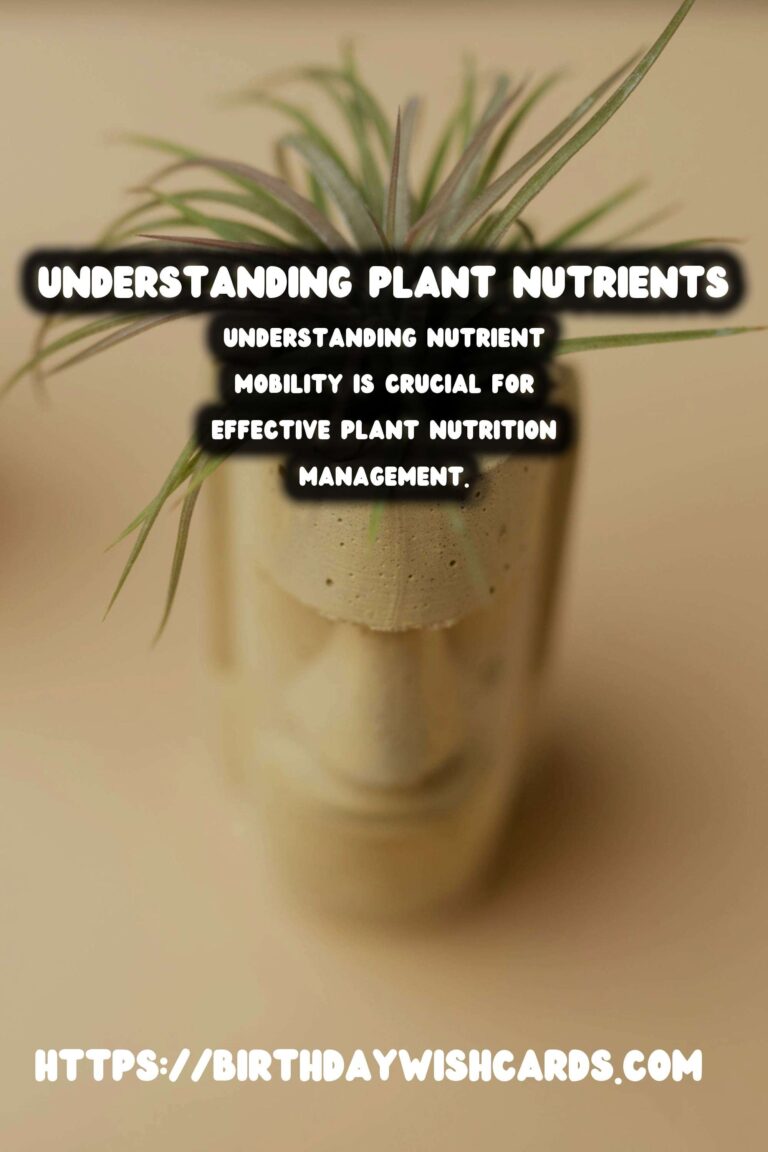
Plants, like all living organisms, require a variety of nutrients to grow, develop, and reproduce. These essential nutrients are divided into two main categories: macronutrients and micronutrients. Within these categories, nutrients are further classified based on their mobility within the plant. Understanding the distinction between mobile and immobile nutrients is crucial for effective plant nutrition management, which can lead to healthier plants and increased yields.
What Are Plant Nutrients?
Plant nutrients are chemical elements that are necessary for plant growth and development. They are absorbed from the soil and atmosphere and play various roles in plant physiology. Macronutrients are required in larger quantities and include nitrogen, phosphorus, potassium, calcium, magnesium, and sulfur. Micronutrients, needed in smaller amounts, include iron, manganese, zinc, copper, molybdenum, boron, and chlorine.
Mobile Nutrients in Plants
Mobile nutrients are those that can be translocated from older plant tissues to newer growth areas when there is a deficiency. This ability to move means that deficiencies often manifest in older leaves first. Common mobile nutrients include nitrogen, phosphorus, potassium, magnesium, and sulfur.
Nitrogen (N): An essential component of amino acids, proteins, and chlorophyll, nitrogen is vital for plant growth and photosynthesis. A deficiency often causes yellowing of older leaves.
Phosphorus (P): Important for energy transfer and photosynthesis, phosphorus deficiency can lead to stunted growth and dark green or purplish older leaves.
Potassium (K): Key for enzyme activation and osmoregulation, potassium deficiency may cause chlorosis and necrosis in older leaves.
Magnesium (Mg): A central component of chlorophyll, magnesium deficiency results in interveinal chlorosis in older leaves.
Sulfur (S): Although often considered immobile in some contexts, sulfur can be mobile in others, leading to yellowing of older leaves when deficient.
Immobile Nutrients in Plants
Immobile nutrients cannot be easily translocated within the plant, so deficiencies typically appear in new growth. These nutrients remain in the tissue where they were initially deposited. Common immobile nutrients include calcium, boron, iron, manganese, zinc, and copper.
Calcium (Ca): Vital for cell wall structure and stability, calcium deficiency often shows up as distorted new growth.
Boron (B): Important for cell wall formation and reproductive growth, boron deficiency can lead to brittle stems and poor fruit development.
Iron (Fe): Essential for chlorophyll synthesis, iron deficiency causes interveinal chlorosis in young leaves.
Manganese (Mn): Crucial for photosynthesis and nitrogen assimilation, manganese deficiency leads to mottled chlorosis in young leaves.
Zinc (Zn): Important for growth hormone production and enzyme function, zinc deficiency results in stunted growth and small, distorted leaves.
Copper (Cu): Necessary for lignin synthesis and enzyme activity, copper deficiency can cause dieback of new shoots and distorted young leaves.
Managing Nutrient Deficiencies
Knowing whether a nutrient is mobile or immobile helps in diagnosing plant nutrient deficiencies. Mobile nutrient deficiencies typically appear in older leaves, whereas immobile nutrient deficiencies are usually observable in younger leaves or new growth. To address these deficiencies, it is essential to perform soil tests and apply the appropriate fertilizers that supply the missing nutrients.
Furthermore, maintaining an optimal pH level in the soil can enhance nutrient availability. Organic matter addition, proper irrigation, and crop rotation are also effective strategies to manage nutrient deficiencies and promote healthy plant growth.
Conclusion
Understanding the role of mobile and immobile nutrients in plants is essential for successful gardening and agriculture. By recognizing the symptoms of nutrient deficiencies and knowing which nutrients are mobile or immobile, gardeners and farmers can make informed decisions about nutrient management, ultimately leading to healthier, more productive plants.
Plants require a variety of nutrients for growth, classified as macronutrients and micronutrients. Mobile nutrients can move within the plant, causing deficiencies to appear in older leaves. Immobile nutrients cannot move, leading deficiencies to show in new growth. Managing nutrient deficiencies involves soil testing and appropriate fertilization. Understanding nutrient mobility is crucial for effective plant nutrition management.
#PlantNutrients #Gardening #Agriculture #SoilHealth #NutrientManagement

